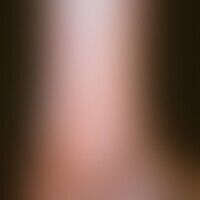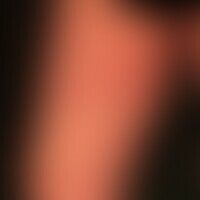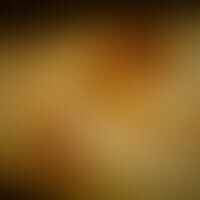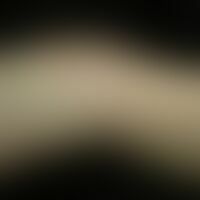
Asteatotic dermatitis L30.8
Desiccation dermatitis: Characteristic craquelée pattern with the diamond-shaped demarcation of the skin, the line pattern is created by the linear breaking up of the skin.
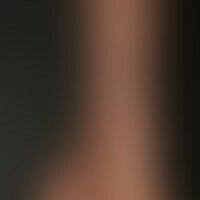
Venous leg ulcer I83.0

Infant haemangioma (overview) D18.01

Collagenosis reactive perforating L87.1
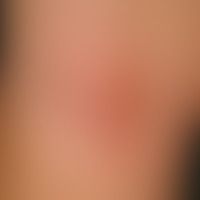
Atopic dermatitis (overview) L20.-
flexural atopic eczema. skin changes in an 18-year-old girl with intermittent course since the age of 4 years. positive FA; EA: pollinosis known. in the area of the hollow of the knee blurred, reddened, little scaly, moderately itchy plaques. skin field coarsened (lichenification). classic finding of flexural eczema.
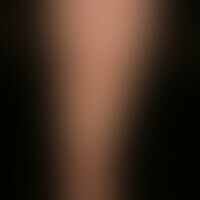
Livedo racemosa (overview) M30.8
Livedo racemosa: irregular, bizarre, not closed circular segments (ankle region), as pioneering morphological indicators for livedo racemosa; for several months now therapy-resistant, schematic deep ulcers.
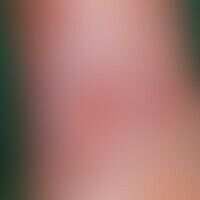
Venous leg ulcer I83.0
Ulcus cruris venosum. deep, punched out ulcer on the lower leg in CVI. the edges are macerated whitish in places. there is a film of zinc paste in the surrounding area.
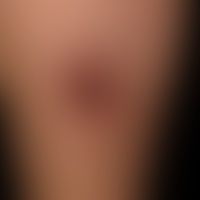
Cholesterol embolism T88.8
Cholesterol embolism: Patient with recurrent, suddenly occurring, very painful, therapy-resistant ulcers; moderately pronounced livedo image.

Lichen planus bullosus L43.10
Lichen planus bullosus: Multiple, solitary, vesicularly transformed red nodules on the lower leg in a 55-year-old man with lichen planus.

Cutaneous botryomycosis L98.0
Botryomycosis. less spectacular clinical findings. circumscribed, less painful area with pustules, nodules and extensive induration. the diagnosis was histologically confirmed by evidence of a deep granulomatous inflammation with abscesses and the presence of eosinophilic granules, the so-called Splendore-Hoeppli phenomenon.

Klippel-trénaunay syndrome Q87.2
Klippel-Trénaunay syndrome. Extensive nevus flammeus; so far no evidence of soft tissue hypertrophy. No pelvic obliquity!
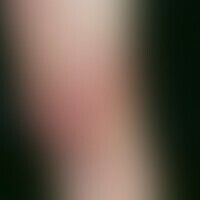
Acrodermatitis chronica atrophicans L90.4
Acrodermatitis chronica atrophicans. 78-year-old female patient with confirmed neuroborreliosis 6 years ago and still positive Borrelia serology. Multiple, chronically inpatient, persisting for 2 years, asymmetrical (only on the left leg), blurred, sometimes burning pain, large, red to red-livid, smooth erythema, partly with crinkled surface (cigarette-paper-like puckering).

Necrobiosis lipoidica L92.1
Necrobiosis lipoidica: bilateral, gradually increasing, moderately sharply defined, confluent, reddish-brownish, centrally slightly atrophic plaques that have existed for about several years.
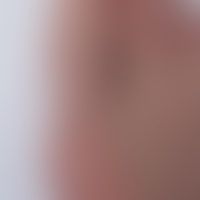
Gout M10.0
Arthritis urica: sudden spontaneous and painful (difficult to walk) redness and swelling (circled in black) of the right metatarsophalangeal joint of the big toe.


